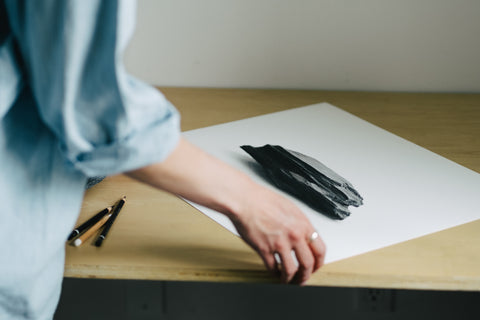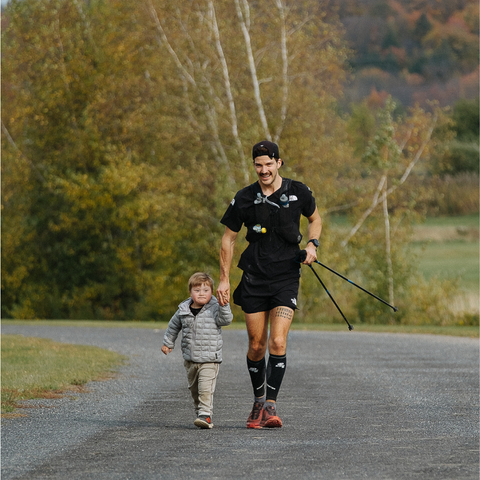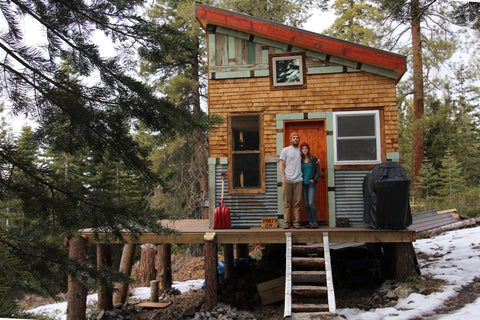Catherine Blanchet’s drawings are quiet odes to the mineral world and the rocks washed up by the tides on the shores of the St. Lawrence.
TEXT : Marie Charles Pelletier
DRAWINGS : Catherine Blanchet
Catherine Blanchet was born in Sainte-Croix-de-Lotbinière and grew up cradled by the river: the St. Lawrence was at once an anchor point, a reassuring presence, and a siren song drawing her out for morning walks. After art school, she settled in Québec City, where she has continued to develop a practice that combines printmaking, lithography, and interior design. As often as she can, she escapes with her family to their three-season cottage perched on the river’s shores near Montmagny. They even journey out when the cottage is closed in the winter, “just to see the ice and feel the wind.”
In 2020 Blanchet had an epiphany: while gathering stones on the shore with her children, the whole mineral world suddenly opened up before her. “When you’re wandering, you become more sensitive to the objects around you, more permeable to them. That unique state of mind drives my creativity,” she explains. Many of us forget about rocks, perhaps because we don’t have to worry about them going extinct. Yet when we linger over the minerals beneath our feet, their raw beauty and perennity offer us insights into time.


As a child, Blanchet was fascinated by things, especially pine cones, seashells, and trinkets. She liked to build collections from her findings—perhaps because as children, we don’t own much. This quest for meaningful objects remains a vital part of her artistic process to this day, along with slowness and contemplation. She searches the shore for rocks with features that speak to her; it could be a hue, a particular angle, or how it accepts or reflects light.
Today, it’s her children, Juliette and Antoine, who fill their little buckets with treasures. Blanchet selects the rock she’ll bring back to her makeshift studio on the riverbank, where she’ll keep it only for the time it takes her to capture its likeness on a white background. After, she’ll return it to the shore and its fellow stones. As she labours over her portrait, Blanchet enjoys knowing the rock will go back to its natural home. Her work—its porosity and subtle shades—is the culmination of fine coloured-pencil lines layered until they render stone.

In an age where everything must be done as quickly as possible, Blanchet goes against the grain. Her medium and the infinite patience it demands weren’t exactly a conscious choice, but the ambling rhythm of her work fulfills her need for solitude and reflection.
“When I’m drawing, I feel present. Through their permanence, rocks connect us to the earth, bringing us back to our own existence,” she explains.
You might say that Catherine Blanchet’s drawings also provide a window to the sea, to a focal point where you can float as you rest your gaze and dwell in quiet.

---
Marie Charles Pelletier is a producer and writer at BESIDE Media. Currently based in British Columbia, she tells the stories of people who inspire her. When she’s not writing, she’s busy getting lost in the mountains or in her thoughts.





